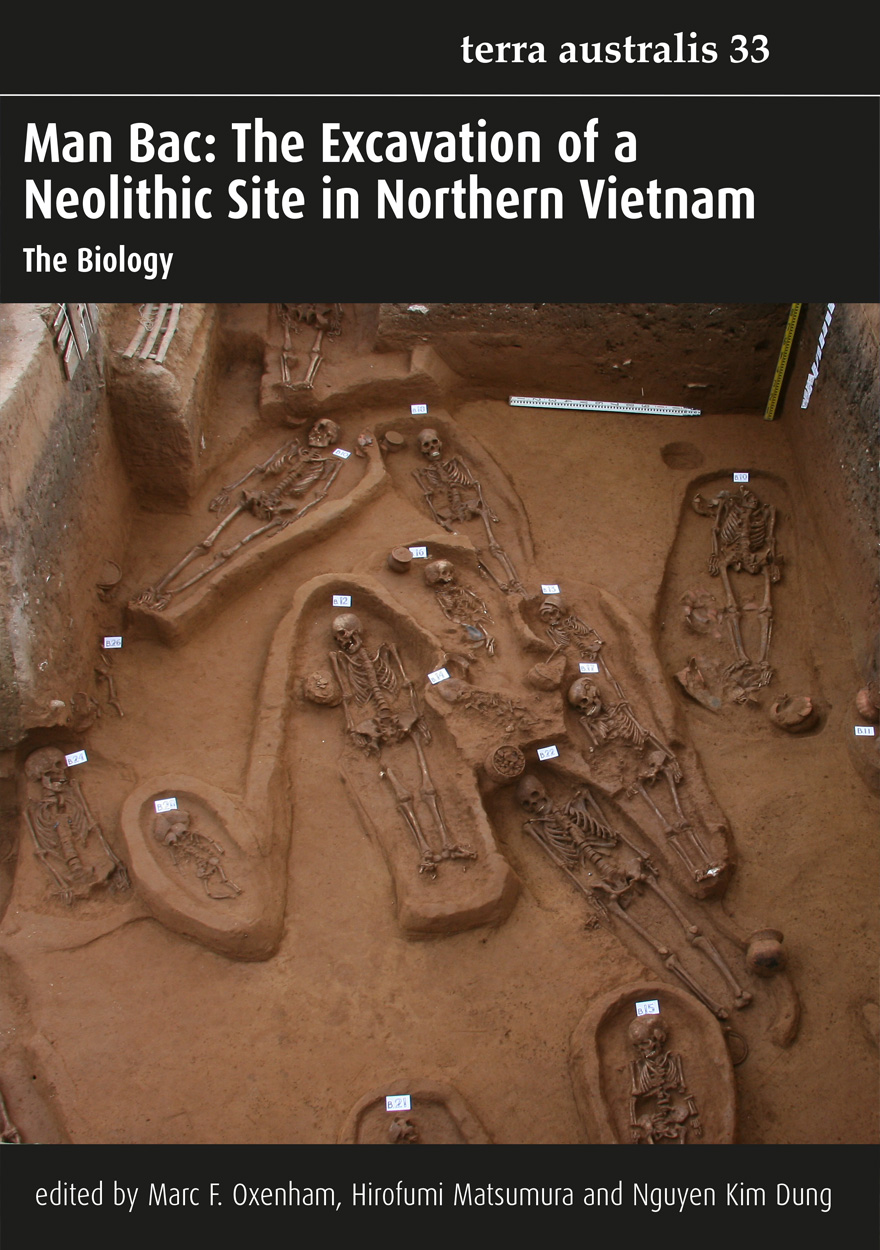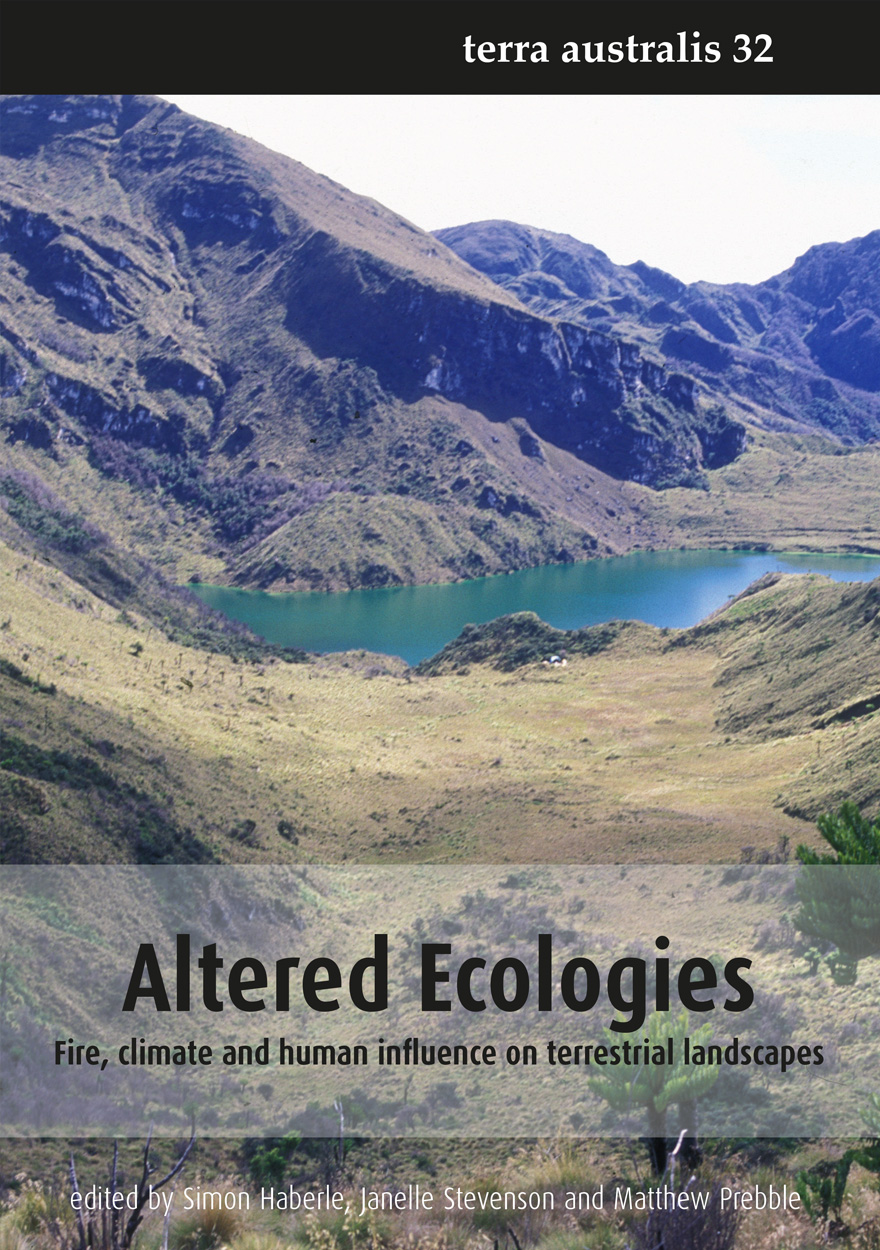Search titles
Displaying results 21 to 30 of 45.

4000 Years of Migration and Cultural Exchange »
The Archaeology of the Batanes Islands, Northern Philippines
Edited by: Peter Bellwood, Eusebio Dizon
Publication date: December 2013
The project reported on in this monograph has been concerned with the archaeology of the Batanes Islands, an archipelago that must have been settled quite early in the process of Austronesian dispersal from Taiwan southwards into the Philippines. A multi-phase archaeological sequence covering the past 4000 years for the islands of Itbayat, Batan, Sabtang and Siayan is presented, extending from the Neolithic to the final phase of Batanes prehistory, just prior to the late 17th century arrivals of foreign navigators such as Jirobei (Japan) and William Dampier (England), followed by the first Spanish missionaries. So far, no traces of preceramic settlement have been found in Batanes, but the archaeological sequence there from the Neolithic onwards, like that in the Cagayan Valley in northern Luzon, is now one of the best-established in the Philippines.

Life on the Margins »
An Archaeological Investigation of Late Holocene Economic Variability, Blue Mud Bay, Northern Australia
Authored by: Patrick Faulkner
Publication date: December 2013
The research presented here is primarily concerned with human-environment interactions on the tropical coast of northern Australia during the late Holocene. Based on the suggestion that significant change can occur within short time-frames as a direct result of interactive processes, the archaeological evidence from the Point Blane Peninsula, Blue Mud Bay, is used to address the issue of how much change and variability occurred in hunter-gatherer economic and social structures during the late Holocene in coastal northeastern Arnhem Land. The suggestion proposed here is that processes of environmental and climatic change resulted in changes in resource distribution and abundance, which in turn affected patterns of settlement and resource exploitation strategies, levels of mobility and, potentially, the size of foraging groups on the coast. The question of human behavioural variability over the last 3000 years in Blue Mud Bay has been addressed by examining issues of scale and resolution in archaeological interpretation, specifically the differential chronological and spatial patterning of shell midden and mound sites on the peninsula in conjunction with variability in molluscan resource exploitation. To this end, the biological and ecological characteristics of the dominant molluscan species is considered in detail, in combination with assessing the potential for human impact through predation. Investigating pre-contact coastal foraging behaviour via the archaeological record provides an opportunity for change to recognised in a number of ways. For example, a differential focus on resources, variations in group size and levels of mobility can all be identified. It has also been shown that human-environment interactions are non-linear or progressive, and that human behaviour during the late Holocene was both flexible and dynamic.

Prehistoric Marine Resource Use in the Indo-Pacific Regions »
Edited by: Rintaro Ono, Alex Morrison, David Addison
Publication date: December 2013
Although historic sources provide information on recent centuries, archaeology can contribute longer term understandings of pre-industrial marine exploitation in the Indo-Pacific region, providing valuable baseline data for evaluating contemporary ecological trends. This volume contains eleven papers which constitute a diverse but coherent collection on past and present marine resource use in the Indo-Pacific region, within a human-ecological perspective. The geographical focus extends from Eastern Asia, mainly Japan and Insular Southeast Asia (especially the Philippines) to the tropical Pacific (Micronesia, Melanesia, and Polynesia) and outlying sites in coastal Tanzania (Indian Ocean) and coastal California (North Pacific).
The volume is divided thematically and temporally into four parts: Part 1, Prehistoric and historic marine resource use in the Indo-Pacific Region; Part 2, Specific marine resource use in the Pacific and Asia; Part 3, Marine use and material culture in the Western Pacific; and Part 4, Modern marine use and resource management.

Transcending the Culture–Nature Divide in Cultural Heritage »
Views from the Asia–Pacific region
Edited by: Sally Brockwell, Sue O'Connor, Denis Byrne
Publication date: December 2013
While considerable research and on-ground project work focuses on the interface between Indigenous/local people and nature conservation in the Asia-Pacific region, the interface between these people and cultural heritage conservation has not received the same attention. This collection brings together papers on the current mechanisms in place in the region to conserve cultural heritage values. It will provide an overview of the extent to which local communities have been engaged in assessing the significance of this heritage and conserving it. It will address the extent to which management regimes have variously allowed, facilitated or obstructed continuing cultural engagement with heritage places and landscapes, and discuss the problems agencies experience with protection and management of cultural heritage places.

Taking the High Ground »
The archaeology of Rapa, a fortified island in remote East Polynesia
Edited by: Atholl Anderson, Douglas J. Kennett
Publication date: November 2012
This volume brings the remote and little known island of Rapa firmly to the forefront of Polynesian archaeology. Thirteen authors contribute 14 chapters, covering not only the basic archaeology of coastal sites, rock shelters, and fortifications, but faunal remains, agricultural development, and marine exploitation. The results, presented within a chronology framed by Bayesian analysis, are set against a background of ethnohistory and ethnology. Highly unusual in tropical Polynesian archaeology are descriptions of artefacts of perishable material. Taking the High Ground provides important insights into how a group of Polynesian settlers adapted to an isolated and in some ways restrictive environment.

Peopled Landscapes »
Archaeological and Biogeographic Approaches to Landscapes
Edited by: Simon G. Haberle, Bruno David
Publication date: January 2012
This impressive collection celebrates the work of Peter Kershaw, a key figure in the field of Australian palaeoenvironmental reconstruction. Over almost half a century his research helped reconceptualize ecology in Australia, creating a detailed understanding of environmental change in the Late Pleistocene and Holocene. Within a biogeographic framework one of his exceptional contributions was to explore the ways that Aboriginal people may have modified the landscape through the effects of anthropogenic burning. These ideas have had significant impacts on thinking within the fields of geomorphology, biogeography, archaeology, anthropology and history. Papers presented here continue to explore the dynamism of landscape change in Australia and the contribution of humans to those transformations. The volume is structured in two sections. The first examines evidence for human engagement with landscape, focusing on Australia and Papua New Guinea but also dealing with the human/environmental histories of Europe and Asia. The second section contains papers that examine palaeoecology and present some of the latest research into environmental change in Australia and New Zealand. Individually these papers, written by many of Australia’s prominent researchers in these fields, are significant contributions to our knowledge of Quaternary landscapes and human land use. But Peopled Landscapes also signifies the disciplinary entanglement that is archaeological and biogeographic research in this region, with archaeologists and environmental scientists contributing to both studies of human land use and palaeoecology. Peopled Landscapes reveals the interdisciplinary richness of Quaternary research in the Australasian region as well as the complexity and richness of the entangled environmental and human pasts of these lands.
— Prof. Peter Hiscock, The Australian National University

Pacific Island Heritage »
Archaeology, Identity & Community
Edited by: Jolie Liston, Geoffrey Clark, Dwight Alexander
Publication date: November 2011
‘This volume emerges from a ground-breaking conference held in the Republic of Palau on cultural heritage in the Pacific. It includes bold investigations of the role of cultural heritage in identity-making, and the ways in which community engagement informs heritage management practices. This is the first broad and detailed investigation of the unique and irreplaceable cultural heritage of the Pacific from a heritage management perspective. It identifies new trends in research and assesses relationships between archaeologists, heritage managers and local communities. The methods which emerge from these relationships will be critical to the effective management of heritage sites in the 21st century. A wonderful book which emerges from an extraordinary conference. Essential reading for cultural heritage managers, archaeologists and others with an interest in caring for the unique cultural heritage of the Pacific Islands.’
— Professor Claire Smith, President World Archaeological Congress

Man Bac »
The Excavation of a Neolithic Site in Northern Vietnam
Edited by: Marc F. Oxenham, Hirofumi Matsumura, Nguyen Kim Dung
Publication date: May 2011
The site of Man Bac in the Red River Delta of Vietnam, one of the most meticulously excavated and carefully analysed of Southeast Asian archaeological sites in the past few years, is emerging as a key site in the region. This book carefully analyses the human and animal remains and puts them into context. The authors describe in detail the health status, the unusual demographic profile and the interestingly divergent affinities of the cemetery population, and discuss their meaning, particularly in association with evidence for the use of marine and terrestrial animal resources; they argue convincingly that the site documents a time when the face of the region’s population was undergoing a fundamental shift, associated with a changing economic subsistence base. Physical anthropologists and archaeologists have argued for years over the timeline, the manner and the very nature of Southeast Asian population history, and this book is essential reading in this debate. Two supporting appendices describe the individual remains in detail.

An Uneasy Relationship »
Norfolk Island and the Commonwealth of Australia
Authored by: Maev O’Collins
Publication date: November 2010
The situation of Norfolk Island, as a territory of the Commonwealth of Australia, is one of the historical anomalies in governance, which has persisted since 1914. It reflects the direct historical linkages between the British Crown and those Norfolk Islanders who were descendants of Pitcairn Islanders of Mutiny on the Bounty fame. Yet, once Federation was in the wind, the British Government, against the expressed wishes of the Norfolk Island community, sought to divest itself of all responsibility for Norfolk Island.
There is a curiously ‘Yes Minister’ quality about the negotiations which lead to the final take-over by Australia, and the appointment of the first Commonwealth Administrator of Norfolk Island. The direct involvement of Atlee Hunt, then Secretary of the Department of External Affairs, eventually ensured the appointment of Michael Vincent Murphy. In order to achieve this end, Hunt had to fend off other applicants who were busy ingratiating themselves with the Minister for External Affairs Patrick McMahon Glynn and the then Prime Minister Joseph Cook. This is essentially a study of the relationships between governors, politicians, public servants and community leaders during the years which followed the take-over of Norfolk Island, and of the struggle of one Norfolk Islander, Charles Chase Ray Nobbs, against Australian administrative authority.

Altered Ecologies »
Fire, climate and human influence on terrestrial landscapes
Edited by: S. Haberle, J. Stevenson, M. Prebble
Publication date: November 2010
Like a star chart this volume orientates the reader to the key issues and debates in Pacific and Australasian biogeography, palaeoecology and human ecology. A feature of this collection is the diversity of approaches ranging from interpretation of the biogeographic significance of plant and animal distributional patterns, pollen analysis from peats and lake sediments to discern Quaternary climate change, explanation of the patterns of faunal extinction events, the interplay of fire on landscape evolution, and models of the environmental consequences of human settlement patterns. The diversity of approaches, geographic scope and academic rigor are a fitting tribute to the enormous contributions of Geoff Hope. As made apparent in this volume, Hope pioneered multidisciplinary understanding of the history and impacts of human cultures in the Australia- Pacific region, arguably the globe’s premier model systems for understanding the consequences of human colonization on ecological systems. The distinguished scholars who have contributed to this volume also demonstrate Hope’s enduring contribution as an inspirational research leader, collaborator and mentor. Terra Australis leave no doubt that history matters, not only for land management, but more importantly, in alerting settler and indigenous societies alike to their past ecological impacts and future environmental trajectories.



